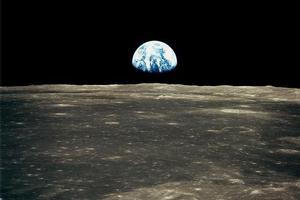Chandrayaan Finds Water on Moon!!!
 |
| New research has shown there is more water on the moon than first thought. Photo / NASA |
It is already known the abrupt end of Chandrayaan - I mission and the media uproar there after. Now scientists have announced their first ground breaking finding of the Chandrayaan -1 Mission .. "Moon surface has traces water.."
Moon Mineralogy Mapper, a NASA instrument onboard Chandrayaan-I, detected wavelengths of reflected light that would indicate a chemical bond between hydrogen and oxygen in materials on the thin layer of upper soil. The Moon Mineralogy Mapper or M3 has confirmed existence of water on moon by analysing the data collected from Chandrayaan-I. The finding ends four-decade long speculation on whether there is water on moon. Scientists first claimed that water existed on moon about 40 years ago after they analysed rock samples brought to earth as souvenirs by Apollo astronauts. But they had doubts about the findings as the boxes in which the moon rocks were brought to earth had leaked contaminating the samples with air from the atmosphere.
The Water Saga
The discovery, with three studies being published in the journal Science on Thursday and a NASA briefing, could refocus interest in the moon. The appeal of the moon waned after astronauts visited 40 years ago and called it "magnificent desolation."
M3 was one of two NASA instruments among 11 pieces of equipment from around the world on Chandrayaan-1, which was launched into orbit around the Moon in October last year. Carle Pieters of Brown University in Rhode Island and colleagues reviewed data from Chandrayaan-1 and found spectrographic evidence of water. The water seems thicker closer to the poles, they reported. "When we say 'water on the moon,' we are not talking about lakes, oceans or even puddles. Water on the moon means molecules of water and hydroxyl (hydrogen and oxygen) that interact with molecules of rock and dust specifically in the top millimetres of the moon's surface," Pieters said in a statement. Scientists said the breakthrough would change the face of lunar exploration.

